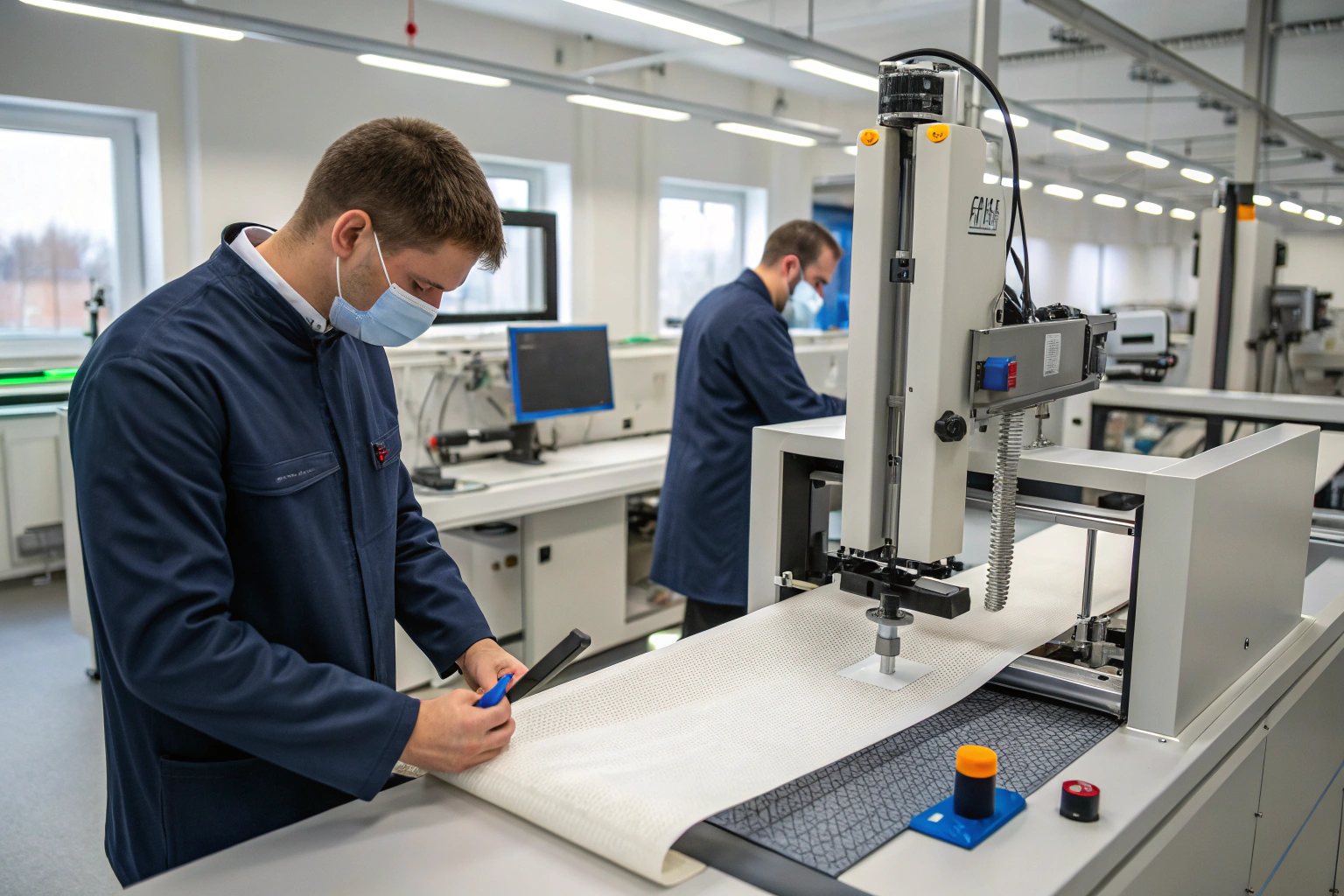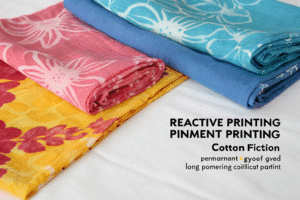As the demand for durable and functional non-woven fabrics skyrockets—spanning everything from medical gowns to geotextiles—the question of how we define and guarantee strength becomes more urgent than ever. Many buyers struggle with inconsistent product quality, weak performance in real-world applications, and an overload of technical jargon from suppliers. If you’ve ever imported non-woven fabrics and felt unsure whether they could truly withstand pressure, stress, or abrasion—this standard is your answer.
The ISO 9073 standard is the industry’s gold benchmark for evaluating strength, particularly tensile, tear, and burst resistance in non-woven fabrics. It sets the rules that all global textile labs follow to ensure consistency and reliability in testing.
Understanding ISO 9073 is no longer optional—it’s essential if you’re sourcing non-wovens from China or beyond. As the owner of a full-service textile manufacturer in Keqiao, I’ll walk you through what this standard means, why it matters, and how it protects your bottom line.
What Does ISO 9073 Measure in Non-Woven Fabrics?
ISO 9073 includes a suite of test methods that target critical strength parameters in non-woven fabrics used across industries. These include tensile strength, tear strength, and resistance to bursting—key indicators of how a fabric behaves under mechanical stress.
ISO 9073 defines how we measure mechanical integrity in non-wovens, ensuring that every test follows strict, repeatable protocols globally.
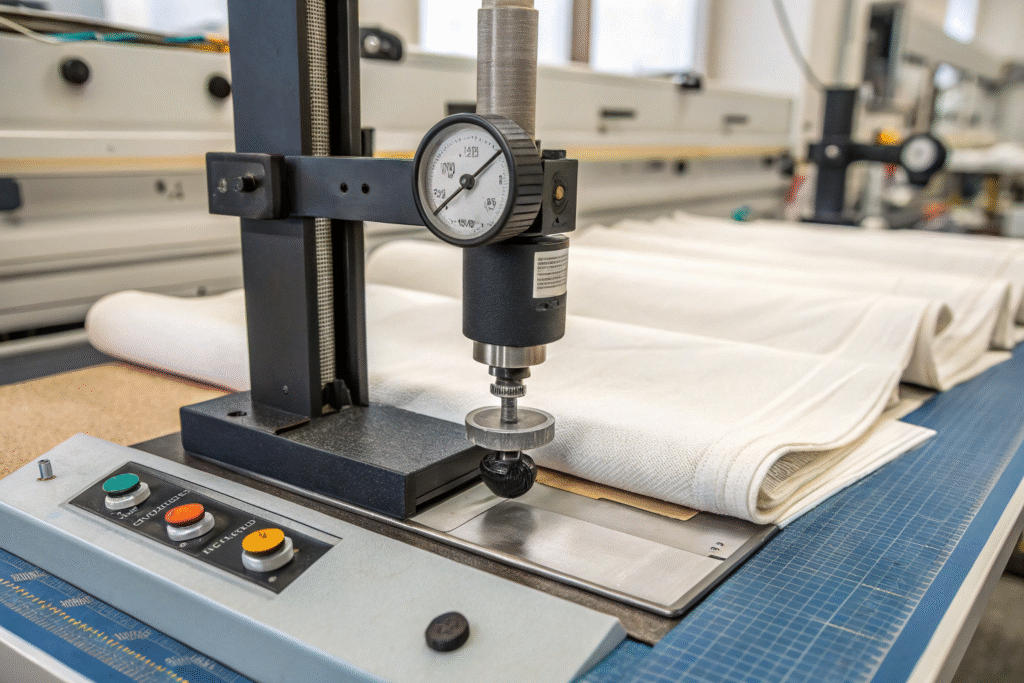
What Is the Purpose of ISO 9073-3 Tensile Strength Testing?
ISO 9073-3 is one of the most referenced sub-parts of the ISO 9073 suite. It outlines how to determine tensile strength using a strip method, where samples are pulled to breaking point on a universal tensile tester.
For customers ordering meltblown, spunbond, or needle-punched fabrics, this test ensures the material won’t tear during end use. Whether you're sourcing filtration media or automotive linings, tensile integrity is essential for durability. You can read more on this testing process at SGS’s testing page or Intertek’s textile quality services.
Why Does Tear Strength (ISO 9073-4) Matter for Disposable Products?
ISO 9073-4 focuses on trapezoidal tear resistance—a test simulating sharp force impact. It’s especially critical for medical drapes, hygiene products, or protective apparel that undergo sudden stress or strain.
Imagine a hospital gown tearing under tension during a surgical shift. Not acceptable. This test ensures minimum force thresholds are met even for lightweight products. It helps global buyers select fabrics that maintain integrity under abrupt force. Reliable info is available on Testex's fabric strength analysis and ASTM fabric testing standards.
How Does ISO 9073 Ensure Global Quality Consistency?
Across the world, textile buyers, traders, and importers rely on standardized test results. ISO 9073 brings uniformity in how fabric strength is assessed, removing doubts in international transactions.
No matter where your fabric is tested—Shanghai, Milan, or São Paulo—ISO 9073 ensures the results are comparable, repeatable, and traceable.
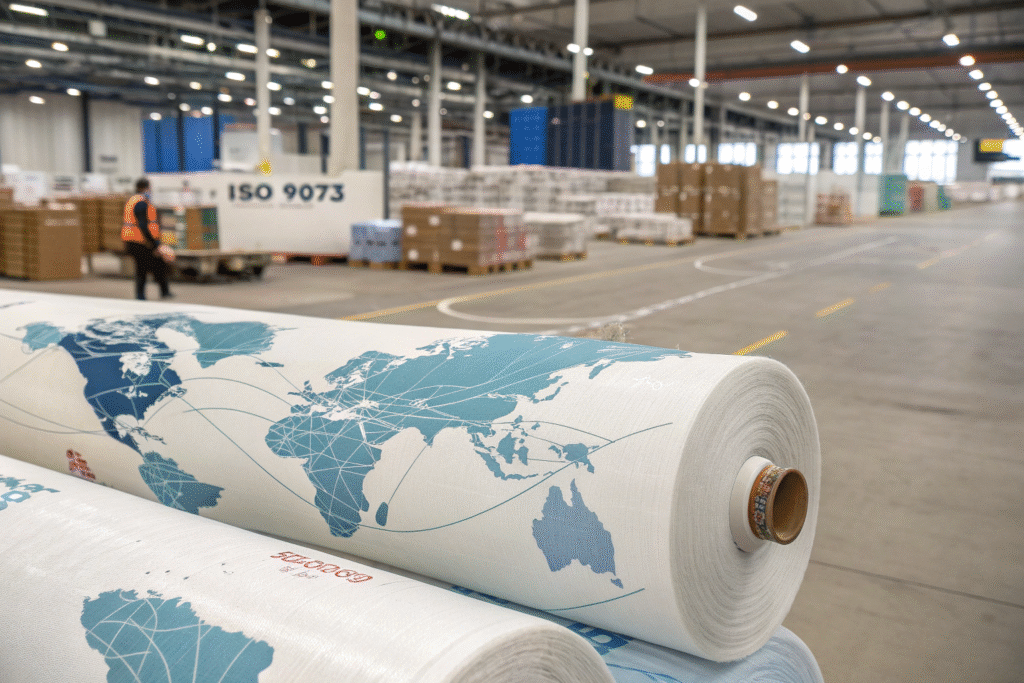
How Do ISO 9073 Results Reduce Supplier Disputes?
When you and your supplier both agree to ISO 9073-certified testing, you’re speaking the same technical language. This significantly reduces conflict over fabric failure, as test outcomes are standardized.
For example, if your sourcing team flags insufficient burst strength on a hygiene fabric, the test report from our CNAS-accredited lab under ISO 9073-6 provides legal clarity. You can see global compliance benchmarks at OEKO-TEX official site and ISO’s own standard documentation platform.
Why Is ISO 9073 Better Than Non-Standard Local Tests?
Localized testing may follow variable methods, causing inaccurate or incomparable results. ISO 9073 replaces ambiguity with precision, allowing buyers to compare apples to apples when evaluating multiple supplier offers.
Furthermore, many international audits, like BSCI or Sedex, increasingly prefer ISO-aligned QA documentation. You can validate this preference at amfori BSCI’s sourcing principles and Sedex’s supplier requirements.
Which Industries Rely Most on ISO 9073-Certified Non-Wovens?
Different industries require specific strength characteristics in their non-woven fabrics, but all rely on ISO 9073 testing to confirm suitability.
From PPE to packaging, ISO 9073 provides the confidence that materials will not fail under stress in their intended application.
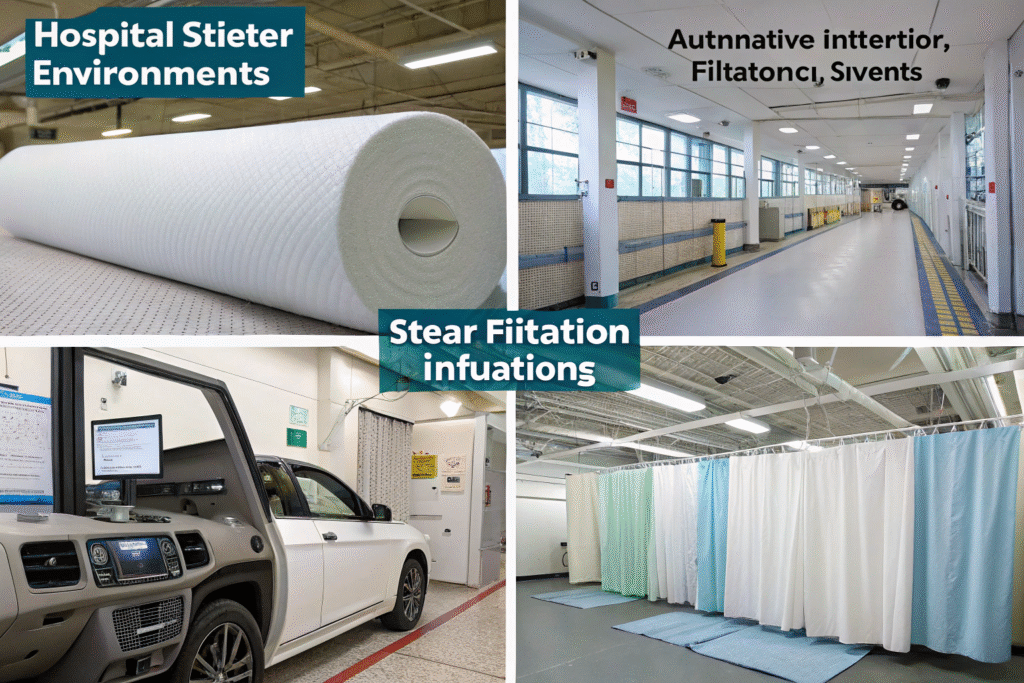
Why Is ISO 9073 a Must in Medical and Hygiene Textiles?
Non-wovens dominate the medical textile space—from disposable gowns and masks to surgical drapes and bed covers. These must be strong yet breathable.
Without ISO 9073-3 (tensile), 9073-4 (tear), and 9073-6 (burst), critical failures in usage could lead to safety risks. International buyers working with hospitals or clinics must demand these tests. Refer to WHO’s PPE guidance and AAMI fabric barrier standards.
Is ISO 9073 Relevant for Automotive and Geotextiles?
Absolutely. Many automotive interiors and geotextile substrates use needle-punched or bonded non-wovens requiring consistent strength under load or vibration.
Tensile and tear resistance are critical for trunk liners, undercarriages, and highway reinforcement fabrics. Failure to comply can result in vehicle safety recalls or infrastructure issues. Learn more about material performance at Autoneum’s materials technology and Geosynthetics Magazine.
How Should Buyers Request ISO 9073 Testing From Suppliers?
For global buyers, especially those sourcing from Asia, requesting ISO 9073 documentation at the start of sampling or quoting helps prevent issues downstream.
You don’t need to be a lab expert—just ask for ISO 9073-compliant test results and align expectations from the start.

What Does a Complete ISO 9073 Report Include?
A professional ISO 9073 report typically contains:
| Test Part | Strength Type | Unit | Typical Result |
|---|---|---|---|
| 9073-3 | Tensile Strength | N/5cm | 180–300 |
| 9073-4 | Tear Strength | N | 15–40 |
| 9073-6 | Burst Resistance | kPa | 200–600 |
It must include date, lab signature, batch ID, and sample photos. Our reports include QR code tracking for verification. More samples can be viewed at Bureau Veritas textile testing or TÜV SÜD fabric certification.
How to Avoid Fabric Sourcing Without Valid ISO Tests?
Many low-grade suppliers skip ISO tests to cut costs. Insist on third-party verification or CNAS/ILAC-accredited labs only.
When you work with our Fumao team, we include ISO 9073 test reports with every non-woven fabric PO above 2,000 meters. Buyers should be wary of vendors refusing to disclose this. Trusted testing organizations include QIMA Lab and Eurofins Consumer Product Testing.
Conclusion
ISO 9073 isn’t just a technical code—it’s the backbone of trust between non-woven fabric buyers and suppliers. Whether you’re sourcing PPE, automotive linings, wipes, or filtration materials, having this certification means you’re buying with confidence. In an industry where one weak batch can cost thousands in recalls or brand damage, ISO 9073 provides a safety net.
At Fumao Fabric, we don’t cut corners. All of our non-woven production lines are aligned with international testing protocols, and we proudly offer real-time tracking, third-party lab reports, and compliance documentation. If you’re ready to partner with a supplier that takes fabric strength as seriously as you do, contact our Business Director Elaine at elaine@fumaoclothing.com. Let’s build your next collection on solid ground—tested and trusted.

